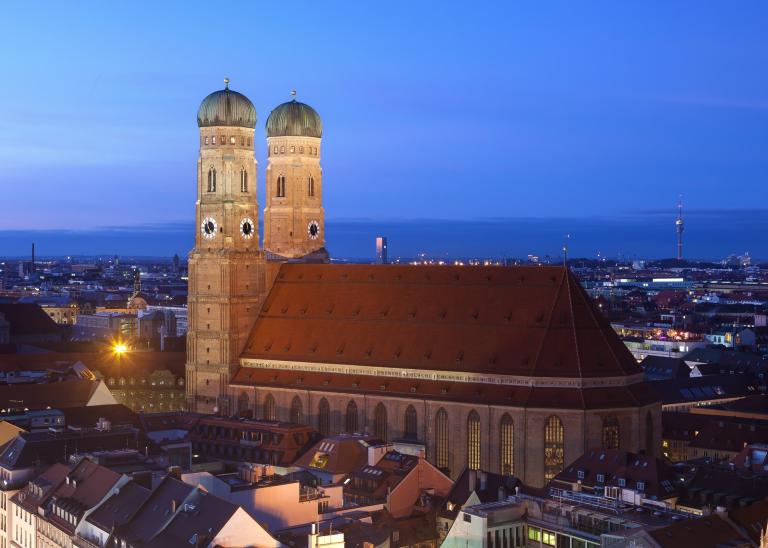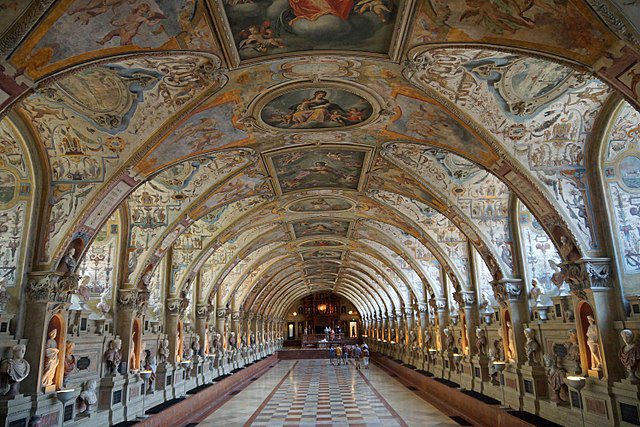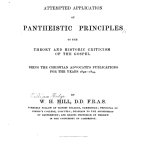
© Thomas Wolf, www.foto-tw.de (CC BY-SA 3.0 DE)
***
Jonn Claybaugh has generously provided yet another concise set of helpful notes for students and teachers of the scriptures.
In the Interpreter Radio Roundtable for Come, Follow Me Old Testament Lesson 25, “The Battle Is the Lord’s” on 1 Samuel 8–10; 13; 15–18, which has been extracted for your listening enjoyment and convenience from the 8 May 2022 broadcast of the Interpreter Radio Show, the discussants are Terry Hutchinson and John Gee. The complete show may be heard at https://interpreterfoundation.org/interpreter-radio-show-May-8-2022/. Moreover, the weekly Interpreter Radio Show can be heard live on Sunday evenings from 7 to 9 PM (MDT), on K-TALK, AM 1640, or you can listen live on the Internet at ktalkmedia.com.

(Wikimedia Commons public domain image by Allie Caulfield)
Today, we and our friends spent much of the day touring the Residenz, the former central Munich palace of the Wittelsbachs, who were the ruling royal family of Bavaria until just after the First World War. It’s a very impressive place, even though it had to be considerably reconstructed in the wake of the Allied bombing raids that occurred during the last portion of World War Two. The largest urban palace in Germany, it contains fully ten courtyards and 130 rooms. Plainly, as Gilbert and Sullivan might have said, it was, it was a glorious thing to be a Bavarian king. We also stopped in at the Cuvilliés Theatre, which is now a part of the overall Residenz complex.
Afterwards, we had lunch at the Haxnbauer, which several people had recommended to us. Most of our group ordered the “Haxnburger,” which one enthusiastic Bavarian had commended to us the day before. I’m glad I didn’t. Sauerkraut and mashed potatoes and bratwurst for me — the last two of them especially good. And, once again, Apfelschorle. A glorious beverage indeed.
Thereafter, we visited the Frauenkirche — more properly the “Münchner Dom” (“Munich Cathedral”) or, officially, the Dom zu Unserer Lieben Frau (the “Cathedral of Our Dear Lady,” which dates essentially to the 1400s, although an earlier church had been built on the site during the twelfth century and although bombs inflicted heavy damage on it during the Second World War. Before pews were installed in the cathedral, it could accommodate twenty-thousand (standing) people. This is pretty astonishing, since late fifteenth-century Munich had only about thirteen thousand inhabitants and since the parish church of “Alter Peter,” which we visited and which I mentioned yesterday, was already available. Curiously, I was told that the Frauenkirche is constructed of brick because appropriate stone quarries were located too great a distance away. But there are plenty of stone buildings in Munich, so far as I can see. Including “Alter Peter.”
We walked back through Marienplatz, where my wife and I bought some delicious-looking fresh strawberries, apricots, and cherries. And, thus far — I know you’re on the edges of your seats with anxious anticipation — the strawberries have indeed been delicious.
Just off from the Marienplatz, for the whole time that we were near the cathedral and in the general area, we heard numerous lusty young male voices roaring out such immortal musical classics as Manfred Mann’s “Doo Wah Diddy” and other such songs, always (so far as I could tell) in English. Plainly, and mercifully, it wasn’t a group of recrudescent neo-Nazis out on the streets of Munich. No “Horst Wessel Lied.” But there were lots of policemen and police vehicles. And more than a few young men who looked both British and, as some might say, three sheets to the wind or a little worse for wear. Why so many police and inebriated young Englishmen and such noisy singing? We found out that the English national football (soccer) team is in town for a UEFA Nations League match against Germany tonight. So, not to worry. Relax! It’s just some visiting English soccer fans!
***
I realize that my use of the term may jar some just a bit, but I’ve always thought of the Restored Gospel as a form of religious humanism.
Please don’t think of the common modern use of the word humanism as shorthand for the more precise term secular humanism. That’s not what I have in mind at all.
What I do have in mind is probably something more like the exuberant, newly confident Renaissance humanism of European history, when most humanists were still Christians. (Erasmus of Rotterdam, for example, was a very serious Christian.) It had its own problems, of course, but it had also caught sight of something very important.
Why do I use the word humanism with regard to my religious faith? Because it seems to me so deeply opposed to many alternative forms of Christian and non-Christian religion that denigrate humanity. Because it offers what to me seems, by many light years, the most spectacular vision of human destiny that can possibly be imagined. Because — and, as I’ve said before, I regard this as the central heresy of “Mormonism” — it sees divinity and humanity as fundamentally akin, not opposed, and as points on a continuum rather than opposite sides of a dividing chasm. Granted that we mortals are very far, in innumerable ways, from God, still, nevertheless, we have the innate potential to be like our Father — and that is precisely what he wants for us.
“If within the short space of mortal life there are men who rise up out of infancy and become masters of the elements of fire and water and earth and air, so that they well-nigh rule them as Gods, what may it not be possible for them to do in a few hundreds or thousands of millions of years?” (B. H. Roberts, The Mormon Doctrine of Deity, 35)
***
We all know that words like tolerance and diversity are extremely fashionable these days. But diversity and tolerance aren’t actually all that popular in certain circles:
“The New Yorker profiles a pro-life ob-gyn student and the Twitter mobs descend”
***
And, finally, here’s an important contribution to Science:
“BYU professor figures out what sets a Utah name apart from the rest of US”
Posted from Munich, Germany










